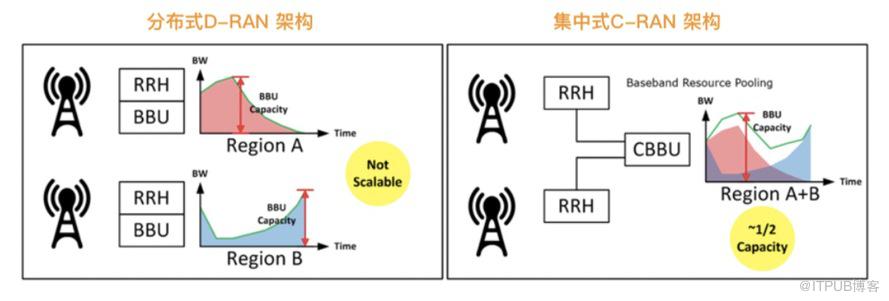Why do we need to change the architecture of the RAN?

First, we need to know why we need to evolve from a traditional RAN architecture to a more flexible RAN architecture?
The answer is: the dramatic increase in data
Each new generation of mobile technology provides higher data rates for mobile devices. And user data usage habits are constantly shifting from fixed devices to smartphones, tablets and other mobile devices. Therefore, operators must find ways to reduce transmission costs while increasing the bandwidth of cellular base stations and mobile users.
At present, the more common RAN is a distributed RAN architecture, that is, the RRH and BBU RAN functions are located at the cell site, and both are transmitted back to the central switching center. This architecture was efficient on 3G, but could not provide the greater bandwidth required for 4G or its later versions at a lower cost.
In the 5G era, devices will reach data rates of 1 Gbit/s, so many mobile operators have concluded that a distributed RAN architecture will become unfeasible.
From D-RAN to C-RAN
The "C" here stands for "Centralized", "Collaborative", "Cloud
" and "Clean" - it is based on centralized processing, collaborative radio and cloud computing The green wireless access network framework of the framework (Clean
system). The centralized C-RAN architecture places only the RRHs on the cellular base stations and moves the functions of the BBUs into a centralized pool of BBUs.
A centralized BBU can bring many benefits to telecom operators.
(1) High efficiency and utilization
In a traditional RAN architecture, each base station requires its own dedicated BBU, along with associated power, cooling and routing. Centralizing BBUs in one location allows pools of BBUs to share the same data center/central office physical space, batteries, generators, and cooling sources.
Additionally, the BBU pool can be served by one large router rather than the separate smaller routers required for each cell site. In short, physical pools ensure that all data center infrastructure and routing resources are used most efficiently, with the least amount of idle and wasted resource capacity.
(2) Simplify base station maintenance and reduce operating costs
A centralized BBU can further save equipment and site operating costs. With centralized RAN, it reduces the workload of sending technicians to each base station for BBU troubleshooting and routine maintenance.
(3) Better inter-cell coordination to improve system performance
Economies of scale and reduced maintenance are the most significant benefits of physical centralization. Centralization can improve performance even without any virtualization.
Difference between D-RAN and C-RAN
The C-RAN architecture mainly consists of three parts: baseband unit pool (BBU), remote radio head (RRH), and fronthaul network connecting RRH and BBU.
In a distributed RAN, the RRH and BBU are usually separated in the base station, with the RRH at the top of the tower and the BBU at the bottom of the equipment room. They are connected through a standardized CPRI (Common Public Radio Interface Protocol) interface.

As we can see from the graph above, in D-RAN, the capacity of each site is not fully utilized most of the time. In C-RAN, however, you can see a significant increase in utilization, and RAN capacity can be expanded with fewer resources, which means less capital expenditure.